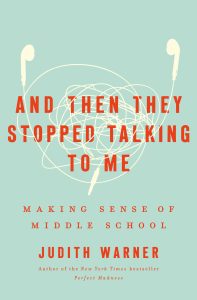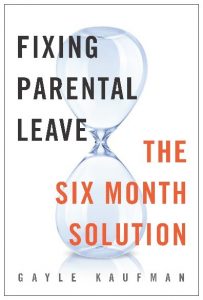
A briefing paper prepared for the Council on Contemporary Families.
We’ve all read about – and maybe even known – the “helicopter” parents who sweep into K-12 schools, demanding special treatment for their children, second-guessing teachers’ grades or comments, and insisting that schools adapt to their child’s unique needs. Teachers complain that these parents are “always rescuing their kids,” hovering over them and “making sure everything is done for them.”
As one elementary-school teacher wrote in an “open letter” to “helicopter” parents, “I love you, I do. But some of the things you do drive me nuts and are really bad for your kid! …Please, let them do their own work. Let them make mistakes and learn from them. Teach them hard work, success and failure.” In an online magazine for teachers, 5th-grade teacher Abigail Courter warned that parents may be “educators’ greatest assets” but they are also “at times, our biggest nemesis,” especially when they set their children up for failure by not teaching them how to cope with setbacks.
Yet whatever the long-term risks may be, “helicopter” parenting can give kids an edge in the tight race for “elite” college admissions and “elite” professional jobs. Most “helicopter” parents are highly-educated, affluent white mothers who intervene because they want their children to grow up to be highly-educated and affluent as well. “Helicopter” parents send their children to “high-quality” schools—schools whose reputation for academic rigor will help their children get into an elite college. But they do not shrink from undermining that rigor when it comes to their own children. They lobby for their children’s admittance to “gifted” programs and Advanced Placement courses even when they don’t qualify. They resist their children being punished when they break the rules. They demand that their children be given higher gradeseven when they didn’t earn them and press for letters of recommendation to elite colleges even when their children weren’t offered those on their own merits.
Now, it’s clear why “helicopter” parents have an interest in giving their children an edge in school. What’s less clear, though, is why schools are willing to let those parents give their children that edge at the expense of other children in school. Most educators honestly believe in equal treatment – and equal consequences – for all their students. So why do so many schools end up catering to privileged “helicopter” parents and their children, even when it goes against what teachers believe is best for students and undermines a school’s commitment to fair and equal treatment of students?
To answer this question, I spent three years observing and interviewing teachers, administrators, parents, and students at a socioeconomically diverse, public elementary school I call Maplewood (research-related regulations require that I protect the privacy and anonymity of my participants by not disclosing their names or the name of the school). In doing so, I found that:
To achieve or maintain a reputation as “high-quality,” schools rely on privileged “helicopter” parents for tax dollars, donations, and volunteer hours. “Helicopter” parents (especially higher-SES, white, stay-at-home and part-time-employed mothers) are often the mainstay of the unpaid volunteer labor force that schools must rely on to provide quality instruction and activities. As a result, teachers use special favors and strategic rule exemptions to avoid conflict with such parents and keep on their good side.
- Teachers told me they want to enforce rules but worry that doing so will lead privileged “helicopter” parents to make trouble for them with higher-ups in the administration. As 4th-grade teacher Ms. Russo explained:
Edward [a higher-SES white student] forgets his homework. And so I tell [Edward’s mother] that Edward will have to stay in for recess. And she writes back, [including the principal in the email, saying]: “I really believe that recess is a time for them to run around. I don’t believe in staying in.” [And the principal conceded]. So Edward has no consequences. If something happens, he’ll go home and tell mom, and she’ll write an email to the principal. And she’s threatening with words like “advocate,” “lawyer,” all these things. And because [Edward’s mother is] saying that, because she’s using the fear factor – has Edward stayed in for recess? No. He hasn’t had to face those consequences.
- Even without pressure from school administrators, teachers recognize that failure to meet the demands of entitled “helicopter” parents will jeopardize the help they get from such parents. As 3rd-grade teacher Ms. Filipelli explained:
At Maplewood, I get lots of emails. Daily emails. A lot of emails. There’s been one parent [a higher-SES, white mother], she’s… oh my goodness. It’s like I need a secretary to be dealing with all these emails. But I know those parents love their children. And those are the parents that help. So, if they have questions, I’m going to answer them. And you might find someone else complaining about it, but at [the lower-SES school where I used to teach], I never had any support. I would have, like, one parent helping. So, bring it on! I’m just happy to have the support.
In consequence, teachers tend to grant the special favors and rule exemptions that privileged “helicopter” parents desire, even when they believe those actions will be detrimental to students. Meanwhile, when less-privileged students and students with less-involved parents break the rules, teachers regularly keep them in for recess, reprimand them in front of their peers, take off points on their assignments, and evaluate them less favorably.
- Fifth-grade teacher Mr. Fischer, for example, knew that Ms. Becker, a higher-SES white mother, was doing her son Nate’s homework for him, noting that she tended to “over-manage” everything Nate did, limiting Nate’s ability to develop any “independence.” But Mr. Fischer did not try to stop the practice. Nor did he subject Nate to any punishment or grade deductions for failing to do the homework on his own.
- When higher-SES white student Drew, whose mother was highly involved in the PTO, forgot to do a language arts project, his 5th-grade teacher Ms. Hudson told him: “Don’t worry about it,” adding “That’s what responsibility gets you. There’s a trust, okay?” Yet when Cody, a lower-SES, mixed-race student whose parents were not visibly involved in school, read the wrong section of the book for homework, Ms. Hudson kept him in for recess, cutting off his explanation and saying sharply: “Well, the first thing is to make sure you have the assignment right. That’s responsibility.”
Policy Implications
Inadequate and unequal funding for public education makes schools dependent on higher-SES “helicopter” parents to achieve or maintain a reputation as “high-quality” schools. When schools can rely on those parents’ tax dollars, donations, volunteer hours, and support for students at home, they can provide the kinds of school environments— high test scores, small class sizes, ample materials, experienced teachers, enrichment courses, extracurricular activities, and state-of-the-art facilities and technologies—that most parents (especially higher-SES white “helicopter” parents) desire.
Since such amenities are not standard educational entitlements, schools are dependent on privileged “helicopter” parents to attain them, and that dependence routinely leads schools to capitulate to those parents’ demands. The result is a vicious cycle. The schools’ reliance on “helicopter” parents sustains the enrichment activities that create a first-class learning environment, but it also allows such parents to game the system for their children, thereby reinforcing successes that may be the result of special treatment rather than special merit.
Adequate and equitably distributed school funding (particularly if coupled with redistribution of funds raised by Parent-Teacher Organizations) has the potential to reduce schools’ dependence on higher-SES “helicopter” parents. Those resources would allow schools to offer high-quality opportunities and amenities for students without the need for support from privileged parents. They would also alleviate pressure on parents (especially mothers) to provide “helicopter”-like support for students both at home and in school.
FOR MORE INFORMATION, PLEASE CONTACT:
Jessica McCrory Calarco, Associate Professor of Sociology at Indiana University, www.jessicacalarco; jcalarco@iu.edu. Professor Calarco is author of Negotiating Opportunities: How the Middle Class Secures Advantages in School.
This briefing paper is based on a longer research article that appeared on March 4, 2020 in the American Sociological Review.










